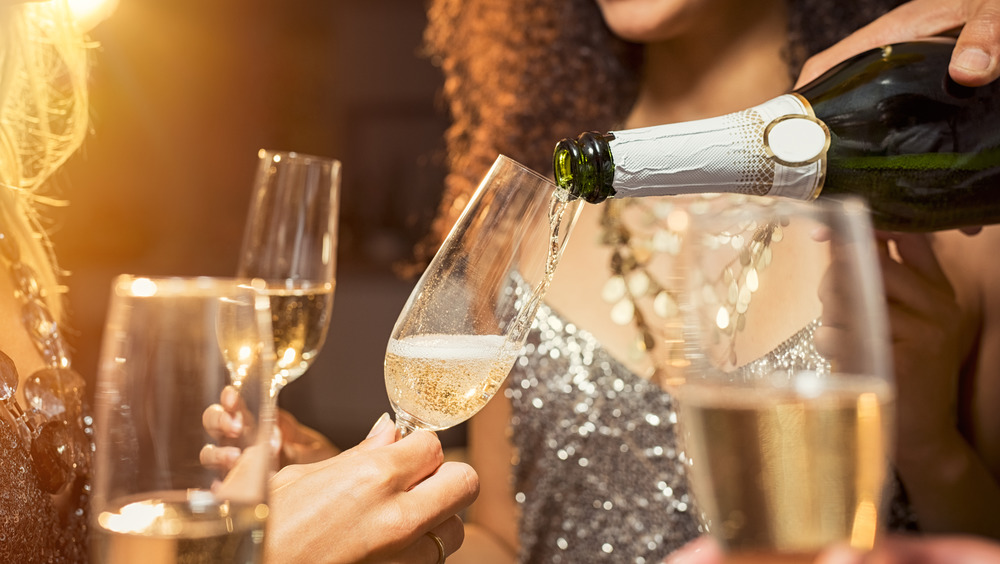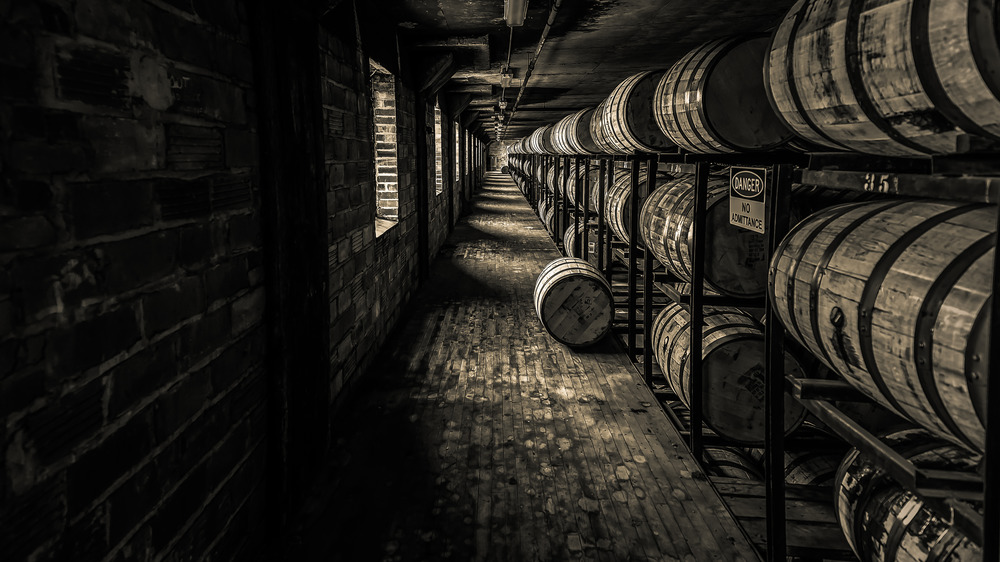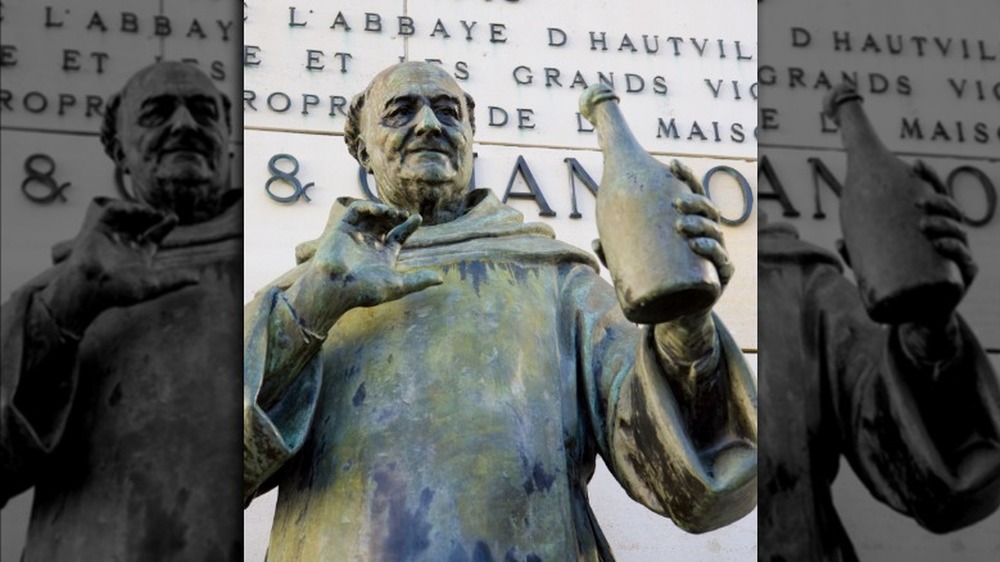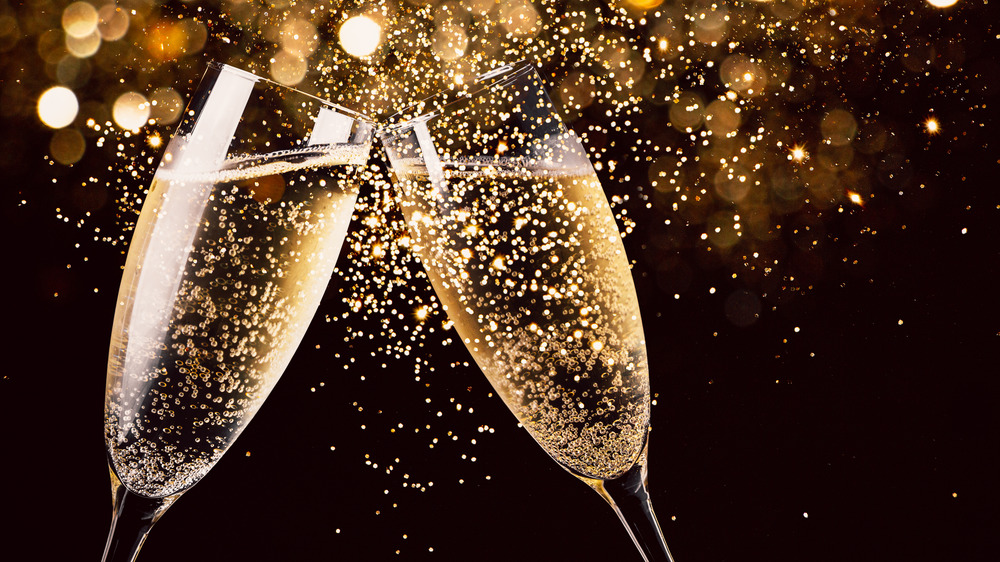Did A Monk Really Invent Champagne?
You've heard it a thousand times: "It's only champagne if it comes from the Champagne region of France." Otherwise, it's just "sparkling wine." Well, that's not entirely true. That overly expensive sparkling beverage goes by many names, depending on which country it's from. Prosecco from Italy, cava from Spain, and even the Germans have Sekt. Regardless of what name it goes by, champagne is made through a specific process, and without it, we wouldn't have those gas station bottles of André to bring in the New Year, or Cristal with which to drain our bank accounts when we want to impress a date. Champagne has become a symbol for celebration and a mark of status. It's not just wine; it's ... uh ... wine with bubbles and a fancy name.
There are many who've never questioned the origin of France's most famous beverage, and many more who have heard the story of its origin. After all, champagne was invented by a monk in France, right? That's the myth anyhow — and it's only a myth. In reality, someone else invented bubbly alcohol more than 30 years before Dom Pérignon developed the champagne method, and they did so entirely on accident.
Britain may not be the first place that comes to mind when we think of champagne, but there's a strong chance it should be.
The earliest champagnes
The truth is that all sparkling wine, even champagne, was invented by accident. The process that produces those unnecessarily expensive bubbles is called "secondary fermentation," meaning the wine ferments a second time while it's in the bottle. The gas produced by the hungry, gassy yeast has nowhere to escape, so it pressurizes into the wine itself, only to be released when the cork pops or the bottle explodes. For the majority of the time wine's been around, the signature champagne fizz was thought to be a sign of bad wine. Those bubbles only occurred when the fermentation process was stalled, usually by early frosts, and reignited in the spring. Imagine opening a bottle of champagne thinking it was wine. If nothing else, it's a good way to put an eye out.
These early champagnes were filled with sediment from the yeast and, as BBC points out, had a bad habit of blowing up from internal pressure, causing chain reactions that could destroy whole wine cellars. At the time, wine bottles were too thin to contain champagne safely, making the beverage a dangerous nuisance, until someone somewhere decided they wanted to make this dangerous drink on purpose. For the French and for most of us who aren't official wine historians, that someone was the Champagne monk Dom Pérignon.
The monk who invented champagne... or did he?
Dom Pérignon (the man, not the brand) was a Catholic monk who lived in France during the 17th century. At the abbey in which he lived, Dom Pérignon tended the vineyard, and he was darn good at it. As Vine Pair points out, the monk doubled the vineyard's size and made vast improvements to the champagne fermenting process, also known as "methode champenoise," though he didn't invent it. Nor did he invent corks, despite the rumors to the contrary about this mysterious wine-making monk. He was, however, a talented vintner who made his mark on the world of wine. He's also said to have announced his bubbly discovery to his brother monks with the words, "Come quickly, I am drinking stars," reports Wired. (And even if it didn't happen, it should have.) (Also, other monks are credited with creating eggnog.)
Also contrary to popular belief, much of the monk's early wine-crafting was aimed at preventing those pesky bubbles from clouding up the wine bottles, according to Decanter, but he later changed his mind in favor of the sparkles, and his contributions to the beverage certainly shouldn't be overlooked, and they haven't been. In fact, his talents have been recognized with a champagne carrying his name, though it's a matter of opinion whether his contributions make his namesake product worth upwards of $200 per bottle.
Champagne from... England?
In an unforeseen twist of events, champagne was most likely invented in England — or at least, the English were the first to write a "how-to" guide for getting happy bubbles into their boring flat wine. It's not only the English who are making this claim, either. Pierre-Emmanuel Taittinger, head of a famous French champagne house, believes it, too.
Taittinger tells Le Figaro (found via the Independent) that the English first made champagne by leaving French white wine on their docks under less than ideal conditions, sparking the secondary fermentation process. As it turns out, anyone can accidentally make champagne. Humans have been doing it for as long as they've been ignoring wine bottles. The important thing, as BBC points out, is that the English were the first to do it on purpose.
A scientist-physician-metallurgist-naturalist-wine-maker by the name of Christopher Merret wrote a document in 1662, more than 30 years before Dom Pérignon's "methode chamenoise," detailing "how to put the fizz into sparkling wine." Merret explains that the British had been adding sugar and molasses to wine for years, feeding the yeast that would inevitably double-ferment the bubbling elixir. Not only that, but Merret was also the first person to describe champagne as "sparkling." So... uh... Sorry, wine purists — champagne doesn't necessarily come from the Champagne region of France after all.



